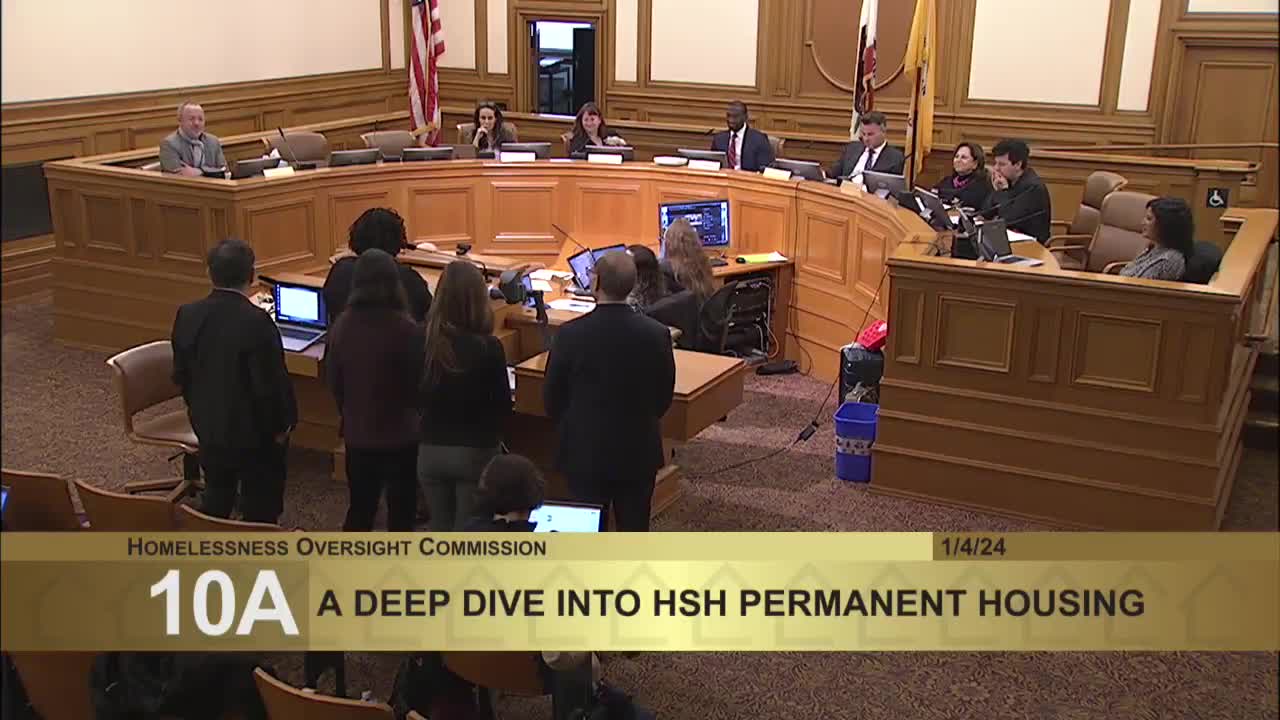Nonprofit leader details homelessness strategies in South Los Angeles areas
January 04, 2024 | San Francisco City, San Francisco County, California

This article was created by AI summarizing key points discussed. AI makes mistakes, so for full details and context, please refer to the video of the full meeting. Please report any errors so we can fix them. Report an error »

In a recent government meeting, discussions centered around homelessness and housing resources in San Francisco, highlighting the city's ongoing challenges and efforts to address these critical issues. The meeting featured insights from a representative of a nonprofit organization specializing in homelessness outreach, who shared their extensive experience in managing resources and coordinating services in Los Angeles County.
The speaker, who served as deputy director for 16 years, detailed their role in overseeing a network of 80 resources aimed at assisting individuals experiencing homelessness across four cities, including South Los Angeles, Linwood, Compton, and Paramount. This area is known for having one of the highest rates of homelessness in the county, second only to Skid Row. The speaker emphasized the importance of regional coordination, likening their role to "air traffic control" for various stakeholders involved in homelessness services, from clients to case managers.
A significant part of their responsibilities included managing a 50-person outreach team that provided direct services to those living on the streets, in collaboration with the Department of Public Health. The speaker also oversaw a portfolio of 12 shelters, which catered to diverse populations through various modalities, including congregate living and safe parking initiatives. This multifaceted approach was necessary due to the limited availability of housing beds in the area.
Additionally, the meeting introduced Salvador Mancuber, the director of permanent housing, who leads efforts related to housing solutions within the city. The team also included members overseeing different components of the permanent housing portfolio, indicating a structured approach to tackling housing challenges.
The discussions also touched on the importance of addressing specific populations within the homeless community, such as transgender individuals, and the need for equity training among service providers. This highlights a growing awareness of the diverse needs within the homeless population and the importance of tailored services.
Overall, the meeting underscored the complexities of homelessness in San Francisco and the collaborative efforts required to create effective solutions. As the city continues to grapple with these issues, the insights shared by experienced professionals in the field will be crucial in shaping future policies and initiatives aimed at reducing homelessness and improving housing access for all residents.
The speaker, who served as deputy director for 16 years, detailed their role in overseeing a network of 80 resources aimed at assisting individuals experiencing homelessness across four cities, including South Los Angeles, Linwood, Compton, and Paramount. This area is known for having one of the highest rates of homelessness in the county, second only to Skid Row. The speaker emphasized the importance of regional coordination, likening their role to "air traffic control" for various stakeholders involved in homelessness services, from clients to case managers.
A significant part of their responsibilities included managing a 50-person outreach team that provided direct services to those living on the streets, in collaboration with the Department of Public Health. The speaker also oversaw a portfolio of 12 shelters, which catered to diverse populations through various modalities, including congregate living and safe parking initiatives. This multifaceted approach was necessary due to the limited availability of housing beds in the area.
Additionally, the meeting introduced Salvador Mancuber, the director of permanent housing, who leads efforts related to housing solutions within the city. The team also included members overseeing different components of the permanent housing portfolio, indicating a structured approach to tackling housing challenges.
The discussions also touched on the importance of addressing specific populations within the homeless community, such as transgender individuals, and the need for equity training among service providers. This highlights a growing awareness of the diverse needs within the homeless population and the importance of tailored services.
Overall, the meeting underscored the complexities of homelessness in San Francisco and the collaborative efforts required to create effective solutions. As the city continues to grapple with these issues, the insights shared by experienced professionals in the field will be crucial in shaping future policies and initiatives aimed at reducing homelessness and improving housing access for all residents.
View full meeting
This article is based on a recent meeting—watch the full video and explore the complete transcript for deeper insights into the discussion.
View full meeting
